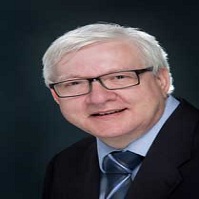
Barry A. S. Lycka
Barry Lycka Professional Corp, Canada
Title: Use of a novel agent to decrease bleeding and bruising associated with dermatologic surgery
Biography
Biography: Barry A. S. Lycka
Abstract
INTRODUCTION:
Bleeding represents a significant complication of dermatologic surgery, affecting 42% of patients greater than 80 years of age and 26% of patients under the age of 80 after excision of non-melanoma skin cancer in a recent study (1) It is a common occurrence after botulinum and filler injection as well as laser surgery. In 2007, Haines Ely proposed a solution. It was based on an observation initially made when he was a phlebotomist as a college freshman working in the lab of Colonel James Ash (founder of the Armed Forces Institute of Pathology [AFIP]). He noted that patients who had eaten ice cream were noted to have a milky serum and did not bleed when blood was drawn. Later, when Ely had undergone a surgical procedure and suffered a hemorrhagic complication, he used this principle to stop the bleeding. This study looks at this method in clinical settings.
STUDY:
From 2007 to 2015, 1011 patients were pretreated with ice cream prior to Mohs Micrographic surgery, 1357 prior to botulinum injections, 1153 prior to filler injections, and 1107 prior to laser treatments. This resulted in a decrease in bleeding complications from 7% to less than 1%. (chi square d – 3 df -93.5 p <0.001)
Discussion:
Bleeding after surgery can be a devastating event. It occurs frequently in Dermatology and is closely related to anticoagulation Use. What is needed is an easy, cost-effective way to administer an application that reverses bleeding at the time of surgery and is readily reversible.
The observations by Ely provided the answer for this simple and elegant study. Feeding patients ice cream 10 minutes prior to surgical intervention (Mohs Micrographic Surgery, botulinum and filler injection) resulted in a huge diminution in the numbers having the complication of bleeding.
Why do foods high in fat content affect the hemostatic mechanism?
Triglycerides from dietary fat are absorbed across the small intestinal lining where chylomicrons are formed. Chylomicrons are released by the intestinal then travel for a short distance and enter the blood stream.
Along with chylomicrons, chylomicron remnants, and VLDL, changes in blood coagulation (clotting) occur in the postprandial period. Directly, clotting factor VII is activated, as well as plasminogen activator inhibitor-I, both of which encourage blood clot formation.
Indirectly, recent work has shown that a high fat, high sugar meal causes an immediate increase in absorption of bacterial endotoxin from the gut. (4) Endotoxin directly activates platelet aggregation. Emulsified fats increase this absorption even more. (5) Commonly used emulsifiers in ice cream such as carboxymethylcellulose and polysorbate 80 further increase plasma endotoxin levels above those seen with simple emulsification.(5) IL-6 and endotoxin receptor sCD14 are increased in human plasma after a high fat ice cream meal and these also contribute to platelet activation.(5) High fat ice cream delivers the triple whammy of chylomicrons, increased circulating chylomicron remnants, and endotoxin absorption with Subsequent platelet activation.
In summary, the current paper compared bleeding in patients undergoing a dermatologic surgical procedure including Mohs micrographic surgery, injection of botulinum and filler injections, and laser surgery, before and after ingestion of material with a high fat content (from Marble Slab Creamery, Calgary, Alberta, Canada). This resulted in the incidence of
hemorrhagic sequelae decreasing from 7% to less than 1%.
The author is deeply indepted to Haines Ely, Professor of Dermatology, University at California Davis, Sacramento for his contributions to this poster.

